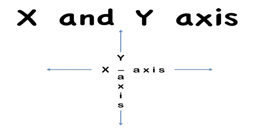I have had the opportunity to work in various math classes with English learners for past two years. While there are a variety of English learners with different language backgrounds as well as educational backgrounds, it has been my experience that a few intentional approaches seem to make the most impact. Using visuals, such as word walls and sentence frames, are crucial for English learners. Providing lots of opportunities for students to work together and use math language such as partner time, and small cooperative learning groups makes a huge difference for English learners. And giving students lots of practice and reinforcement seem to make a difference in achievement.
Monthly Archives: January 2012
Using Cooperative Groups in Math
English learners need to have opportunities to speak and listen to the new language they are learning. Although math concepts may be familiar, the language isn’t ELL students need safe opportunities to use new language. It is much less intimidating to speak to one or two other students than it is to speak in front of the whole class or to the teacher. Teachers can have students turn to their partner and tell how he/she got the answer, or what a term means. Teachers can organize small groups and do activities such as Fan and Pick, Jigsaw, and Four Corners. Cooperative learning groups give students opportunities to practice their new learning in the content as well as the language.
Homework and Practice
Learning a new language as well as new information requires practice. English learners will probably not learn a new skill with just one exposure. It takes time and repeated exposure for new learning to occur. According to Annie Murphy Paul, there are a number of “Mind, Brain and Education methods” we can use to give students quality homework for practice. She suggests a few techniques that researchers have found to impact learning in a positive way.
One idea is called spaced repetition in which learners encounter the same information in shorter sessions spaced out over a longer time period. Students are exposed and re-exposed to new learning over the course of a semester rather than in a one-week period. Research supports that we remember information more permanently when we are exposed to it repeatedly over time.
Another technique is called retrieval practice. This is the concept of calling up information in our brain like we do when we study for a test. It is very different than just passively reading over information. Research supports that if students quiz themselves over new information, they will actually remember it more than if they just read over their notes.
Another concept, referred to as cognitive disfluency, promotes new learning. “When we work hard to understand information, we recall it better; the extra effort signals the brain that this knowledge is worth keeping”(Murphy, p.3). One way to create some difficulty for students is to use interleaving. This is when teachers might mix up different types of problems rather than grouping them by similarity. Students can’t assume the problems will be the same so their brains have to work harder to figure out the solutions. One study found that students who had to figure out the mixed up problems scored more than double those students who had practiced one type of problem at a time. English learners definitely need practice and these are just some suggestions to help make sure we provide quality not just quantity.
Bibliography
Murphy Paul, A. (2011, September 10). The trouble with homework. New York Times, pp. 1-4.
Using Visuals in Math
Students learning a new language as well as new content such as math, need to see the words and concepts they are learning. These can be visual representations of the words or symbols to represent the words but they must be referred to multiple times throughout the lesson and unit of study. Some of these concepts will be used throughout the entire course. For example, this picture:
x
x
Other concepts will only be used for the particular chapter. For example, this picture:
 Teachers can have the vocabulary posted on their walls, in a pocket chart, or available electronically through a power point or other source. Teachers can also use sentence frames to support the English learner’s language development. If the teacher provides the basic sentence pattern and words, the student can focus on one or two new vocabulary words. For example, If I see a + (plus) sign, I know I need to ________. (add) These sentences can be displayed throughout the classroom, or brought out to help with specific lessons. The important aspect is to actually use the visuals and continually refer to them throughout the lessons.
Teachers can have the vocabulary posted on their walls, in a pocket chart, or available electronically through a power point or other source. Teachers can also use sentence frames to support the English learner’s language development. If the teacher provides the basic sentence pattern and words, the student can focus on one or two new vocabulary words. For example, If I see a + (plus) sign, I know I need to ________. (add) These sentences can be displayed throughout the classroom, or brought out to help with specific lessons. The important aspect is to actually use the visuals and continually refer to them throughout the lessons.

